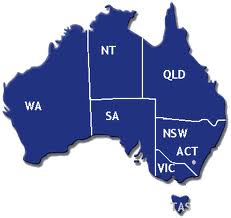Two books released in recent times trigger interesting questions for business owners and Human Resources professionals across Australia.
These questions can lead to major HR problems for employers.
 The first, a book released by Australian entrepreneur and eco-billionaire, Dick Smith argues strongly for a sustainable population level for Australia. The book, called ‘Dick Smith’s Population Crisis,’ is described in its own summary as follows:
The first, a book released by Australian entrepreneur and eco-billionaire, Dick Smith argues strongly for a sustainable population level for Australia. The book, called ‘Dick Smith’s Population Crisis,’ is described in its own summary as follows:
“In 2011 the world’s population exceeded 7 billion. Each year we add nearly 80 million people and by mid-century we will require twice as much food and double the energy we use today. Australia will be deeply affected by these trends – we have the fastest growing population of any developed nation.
These are the staggering facts that confronted Dick Smith. They set him on his crusade to alert us to the dangers of unsustainable growth. They are the facts that have convinced him that if we are to ensure the survival of our civilisation and the health of the planet then we must put a stop to population growth, now.
As our cities continue their unrestrained growth, as we battle daily on crowded public transport and clogged freeways, and as we confront the reality of water and power shortages, Dick challenges the long-held myth that growth is good for us. But more importantly he offers ways for us to re-invent our economy, to reassess the way we live and to at least slow down that ticking clock. This is a provocative, powerful and urgent call to arms.”
Smith’s call for a sustainable population is made all the more interesting for HR strategy when considered in the context of the other major book released in recent times by the eminent and very entertaining sociologist and KPMG partner, Bernard Salt.
Salt’s new book called ‘The Big Tilt’ outlines the challenges faced by Australia (and probably also by many other developed economies) due to the imminent mass exodus from the workforce of the Baby Boomer generation.
Salt scopes the big questions of where Australian society might be headed in the decade ahead.
One of the most pressing social and demographic issues will be the baby bust according to Salt.
In 2011 baby boomers born in 1946 turn 65 and are eligible for an age pension. This sets up an invisible faultline (or tilt point) where boomers exit the workforce at a faster rate than Gen Y enters the workforce.
This faultline or Big Tilt as Salt calls it will change consumer spending (greater emphasis on ‘value’ through, say, internet retailing), create new social behaviours (downshifting where boomers extract equity from big city property) and present challenges to the skills and tax base of the nation since there are not enough workers to replace the boomers and not enough tax to fund the retirement that boomers have come to expect.
These two fascinating characters within the Australian business environment have highlighted some major challenges for any organisation planning to operate within Australia over the coming decade.
Many questions will abound about the management of skills shortages, labour supply, the sources and logistics of recruitment and more.
Smart organisations are keeping abreast of these developments and noting the very real challenges as they apply to staff management.
HRwisdom